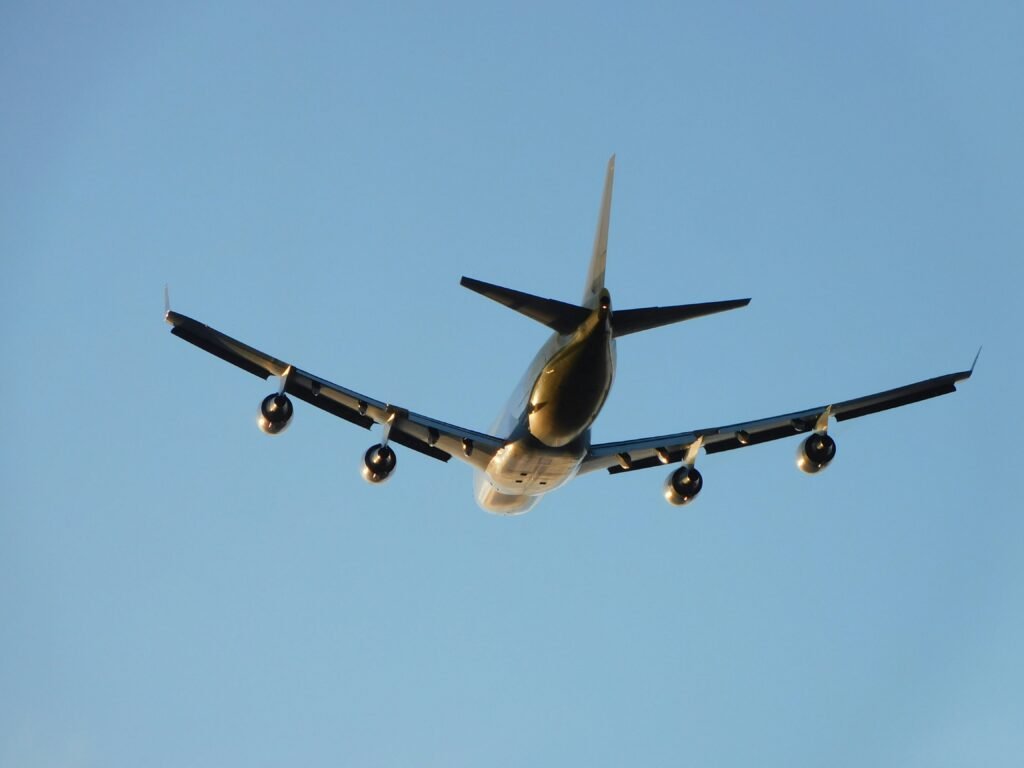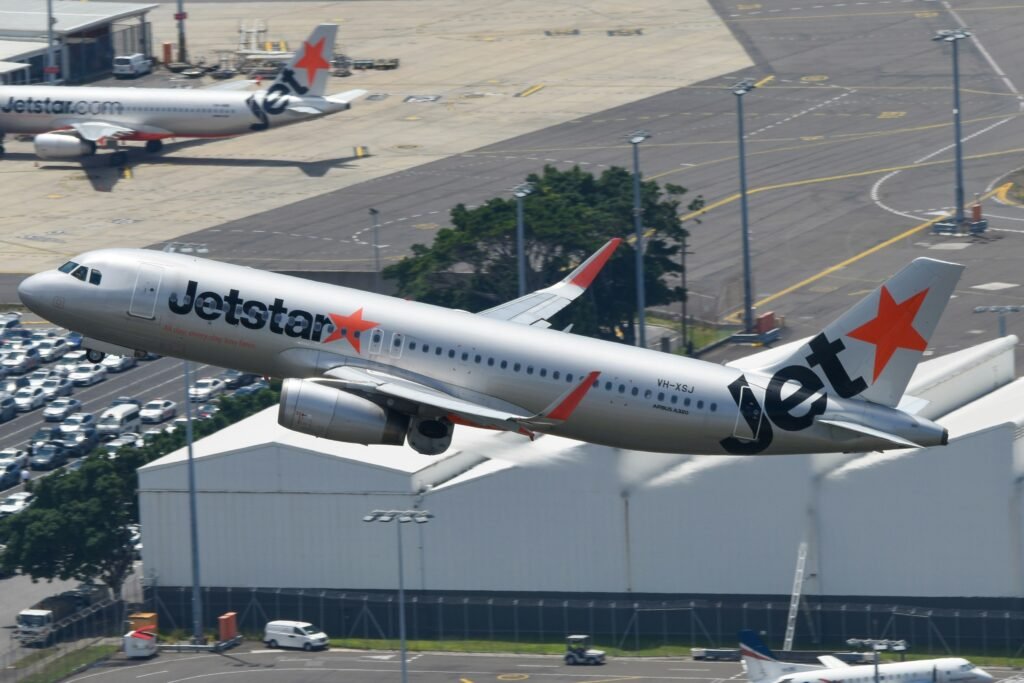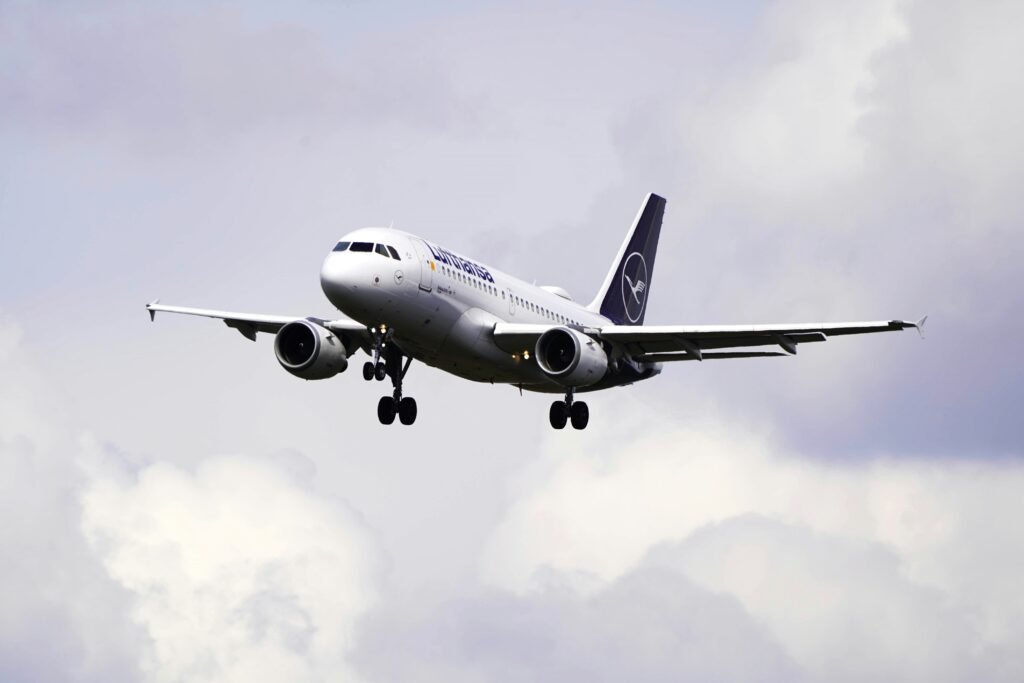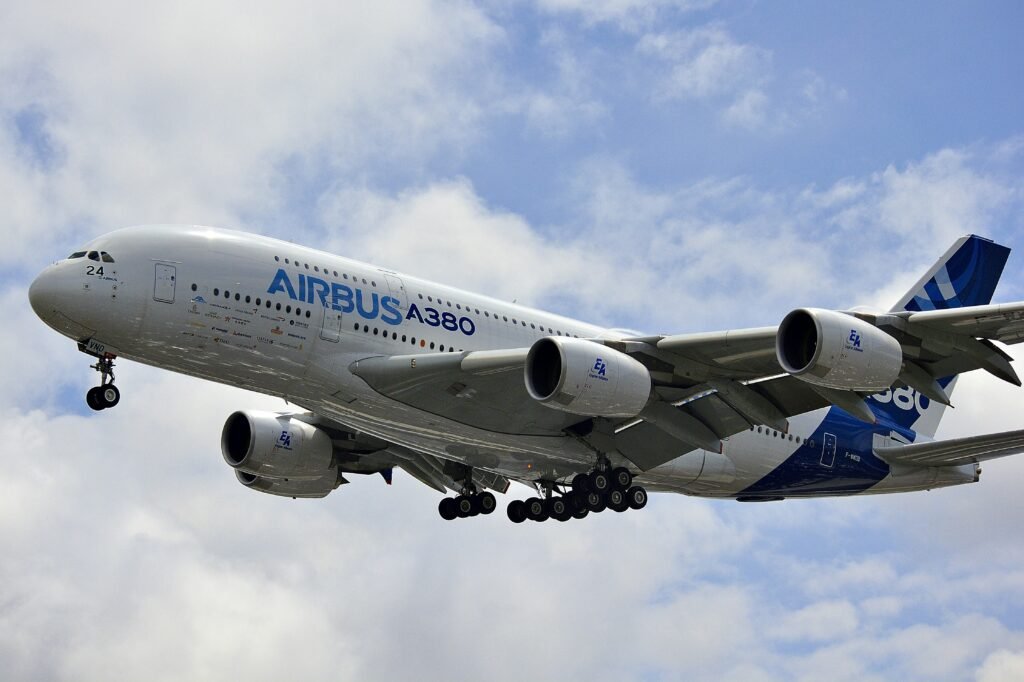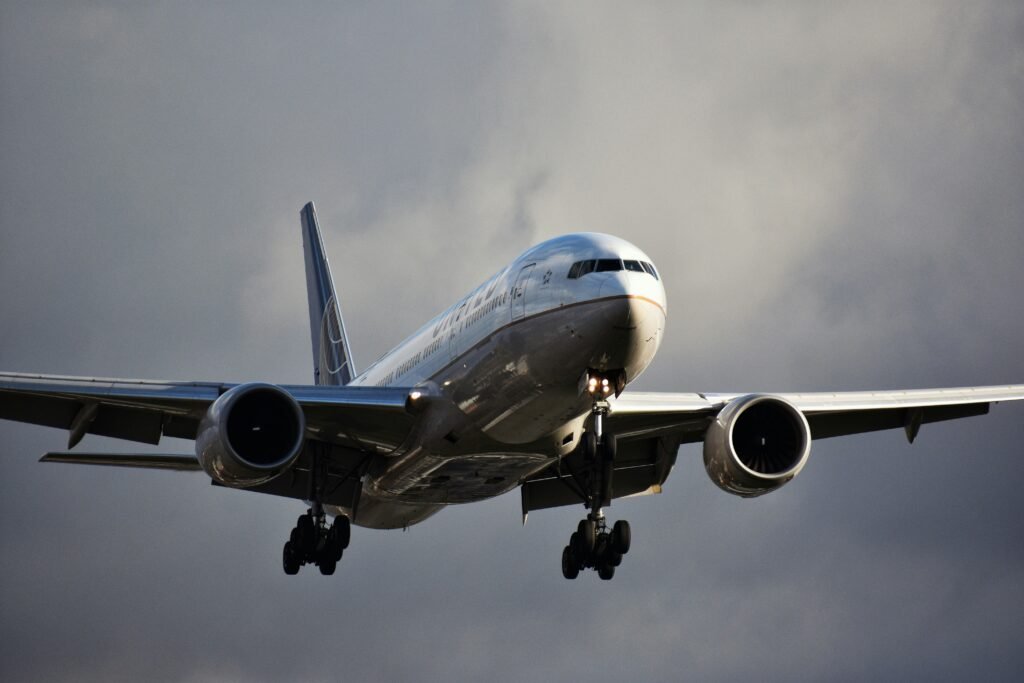
Introduction to Aircraft Strength
In the realm of aviation, the strength of passenger airplanes plays a pivotal role in ensuring safe and efficient travel. Aircraft strength refers to the ability of an airplane’s structure to withstand various forces and stresses experienced during flight. A deep understanding of this concept is essential, as it encompasses numerous factors that contribute to the overall safety of the aircraft and its passengers.
During flight, airplanes encounter various types of forces, including aerodynamic, gravitational, and inertia forces. Aerodynamic forces, primarily lift and drag, are generated as the aircraft moves through the atmosphere. Lift is created by the wings, enabling the aircraft to ascend and remain airborne, while drag opposes the thrust produced by the engines, influencing fuel efficiency and speed. Gravitational forces act on the aircraft’s mass, which must be counterbalanced during takeoff, flight, and landing phases.
In addition to these forces, passenger airplanes also experience significant inertial forces that arise from changes in speed or direction, especially during maneuvers such as takeoff, landing, or turbtulence. Understanding how these various forces interact with the aircraft’s structure is crucial for engineers and designers who strive to develop resilient and robust airplanes capable of safely carrying passengers across great distances.
The integrity of an aircraft’s structure is paramount to passenger safety. Materials used in aircraft construction, such as aluminum alloys and composites, are chosen for their strength-to-weight ratios, allowing for both durability and efficient performance. Rigorous testing and adherence to safety standards ensure that each component of the airplane can withstand extreme conditions, ultimately delivering an aircraft that is both strong and resilient. This ongoing commitment to aircraft strength and safety remains central to the aviation industry, where the well-being of passengers is the highest priority.
Materials Used in Aircraft Construction
The construction of passenger airplanes involves a wide array of materials, each carefully selected to optimize performance, strength, and weight efficiency. The primary material used in the airframe of most commercial aircraft is aluminum alloys. These alloys provide an excellent balance of strength-to-weight ratio, making them suitable for various structural components. The lightweight nature of aluminum contributes significantly to fuel efficiency, as it facilitates reduced overall aircraft weight. Additionally, the resistance to corrosion offered by modern aluminum alloys enhances the longevity and durability of the airframe.
In recent years, titanium has emerged as another critical material in aircraft construction. Known for its exceptional strength and resistance to extreme temperatures, titanium is typically utilized in areas that require high structural integrity and durability, such as landing gear and engine components. Despite being more expensive and heavier than aluminum, titanium’s unique properties make it indispensable for specific applications where performance and safety are paramount. Its ability to withstand severe environmental conditions ensures that it continues to play a vital role in the structural design of passenger airplanes.
Composite materials, particularly carbon-fiber-reinforced polymer (CFRP), have also gained significant traction in aerospace engineering. Composites are exceptionally lightweight and possess robust tensile strength, which is essential for improving fuel efficiency and overall aircraft performance. The incorporation of composite materials allows manufacturers to design complex shapes and structures that would be difficult, if not impossible, to achieve with traditional materials. Innovations in this area continue to drive advancements in aircraft technology, as they enhance both the resilience and the operational capacity of modern airplanes.
By utilizing a combination of aluminum alloys, titanium, and composite materials, aircraft manufacturers can ensure that passenger airplanes not only meet structural and safety requirements but also optimize weight efficiency, contributing to more sustainable air travel.
Design Principles for Strength and Safety
The design of passenger airplanes integrates a multitude of principles aimed at ensuring both strength and safety. One crucial element is load distribution, which refers to the way forces and weights are spread across the structural components of the aircraft. Engineers meticulously calculate how different segments of the airplane bear various loads during flight, taking into account not only the weight of passengers and cargo but also the aerodynamic forces acting on the aircraft. By optimizing load distribution, engineers can minimize stress concentrations and enhance the overall durability of the airplane.
Another significant principle is redundancy. This design philosophy entails incorporating multiple systems or components that perform a similar function, which ensures that an airplane can still operate safely if one system fails. For instance, modern aircraft include redundant hydraulic systems for controlling flight surfaces. If one hydraulic line becomes compromised, others can take over, thereby preventing a loss of control. This approach is crucial in reinforcing the reliability of the aircraft, as redundancy often serves as the last line of defense against potential failures.
Moreover, engineers prioritize failure tolerance in airplane design. This principle involves creating structures and systems capable of withstanding unexpected stresses or failures without resulting in catastrophic consequences. An excellent example of this is the use of fail-safe designs, where certain components are specifically engineered to fail in a controlled manner. By designing aircraft systems with inherent safety margins, engineers can ensure that, even in adverse scenarios, the airplane can maintain stability and allow for a safe landing. Such thoughtful design principles not only fortify an aircraft’s strength but also play an integral role in enhancing the safety of air travel, ultimately building passenger confidence in aviation.
Testing and Certification of Aircraft Strength
The strength and safety of passenger airplanes are paramount, necessitating a comprehensive testing and certification process. This rigorous procedure ensures that aircraft can withstand the various forces encountered during flight and maintain structural integrity throughout their operational lifespan. One crucial aspect of this process is load testing, where engineers simulate various conditions that an airplane might face, such as turbulence, takeoff, and landing forces. These tests are designed to push the aircraft to its limits, identifying any weaknesses in the materials or design before the airplane enters service.
In addition to load tests, stress analysis plays a vital role in evaluating the strength of aircraft components. Advanced computer simulations are employed to predict how different parts of the airplane will react to different stressors. This form of analysis provides insights into potential failure points and allows for the optimization of design elements to enhance overall strength. It enables engineers to assess not only the materials used but also the overall configuration of the aircraft to ensure that it meets stringent safety standards.
Furthermore, regulatory bodies, such as the Federal Aviation Administration (FAA) in the United States and the European Union Aviation Safety Agency (EASA) in Europe, oversee the certification process. These organizations establish strict guidelines and criteria that must be met for an aircraft to receive certification for commercial use. They require detailed documentation of all testing results, design specifications, and compliance with safety regulations. The certification process not only enhances passenger safety but also reinforces the industry’s commitment to maintaining high standards of aircraft strength and reliability.
Through the combination of load testing, stress analysis, and regulatory oversight, the aviation industry ensures that passenger airplanes are meticulously assessed for strength before they commence operations. This multifaceted approach provides a robust framework that underpins the safety and resilience of modern air travel.
The Role of Aerodynamics in Aircraft Stability
The aerodynamic design of passenger airplanes is pivotal in ensuring their overall strength and stability during flight. Aerodynamics refers to the behavior of air as it interacts with solid objects, and in the context of aircraft, the shape and structure of the airplane play crucial roles. A well-designed aircraft shape significantly reduces drag, which in turn enhances fuel efficiency. This is essential for commercial airlines, as fuel consumption directly impacts operating costs and environmental sustainability.
A streamlined fuselage allows air to flow smoothly around the airplane, minimizing turbulence and resistance. This design characteristic not only aids in reducing drag but also contributes to improved lift. Lift is the upward force needed for an airplane to rise off the ground, and it is largely dependent on the wing design and the aircraft’s speed. Wing shapes, such as high-aspect-ratio wings, are engineered to maximize lift while maintaining control, contributing to the overall stability of the aircraft in flight.
Moreover, aerodynamics influence structural integrity. Aircraft must withstand various flight conditions, including turbulence, high-speed maneuvers, and varying pressure altitudes. A well-managed design ensures that stress is evenly distributed across the structure, thereby enhancing its strength. Innovations such as winglets, which reduce vortex drag, have also emerged, showcasing advancements in aerodynamics that contribute to better performance and stability.
In essence, the meticulous science of aerodynamics not only optimizes flight efficiency but also fortifies the aircraft against the inherent challenges of air travel. By prioritizing aerodynamic principles in design, manufacturers can produce passenger airplanes that deliver exceptional performance and reliability, ensuring both safety and comfort for passengers. With ongoing research and development in this field, the future of commercial aviation promises even more robust designs to meet the demands of modern air travel.
Impact Resistance: How Planes Are Built to Withstand Forces
Passenger airplanes are marvels of engineering, specifically designed to endure various impacts and forces encountered during their operational lifespan. One of the primary challenges these aircraft face is bird strikes. The aviation industry recognizes the potential dangers posed by wildlife, prompting manufacturers to incorporate robust design features to mitigate risks. For example, the windshield and engine inlets of modern passenger airplanes are built to endure significant impacts. Engine manufacturers conduct rigorous testing, simulating bird strikes to ensure that engines continue to operate safely even after being compromised by foreign objects.
Additionally, the fuselage of an airplane is constructed from high-strength aluminum alloys and composite materials, providing resilience against external forces. These materials combine lightweight properties with strength and flexibility, enabling the structure to absorb and dissipate energy during turbulence or minor collisions effectively. The strategic placement of reinforcements in critical areas further enhances the aircraft’s ability to withstand unexpected forces, contributing to overall structural integrity.
Turbulence is another factor airplanes must contend with, and modern aircraft are engineered to handle these dynamic conditions gracefully. Flight control systems, such as advanced autopilot features, help pilots navigate turbulent air by automatically adjusting flight parameters to enhance stability. Additionally, the aerodynamic design of wings plays a crucial role in mitigating the effects of turbulence, allowing the aircraft to glide through turbulent air with minimal disruption. The wings are designed not only to produce lift but also to adapt to changing air currents, ensuring that passengers remain comfortable and secure during flight.
This combination of advanced materials, structural reinforcement, and aerodynamic innovations reflects the commitment to safety and reliability in passenger airplane design. By taking into account potential impacts and forces, engineers enable these aircraft to maintain operational safety, ensuring that air travel remains one of the safest modes of transportation available today.
Real-World Examples of Airplane Resilience
Passenger airplanes are engineered to withstand a variety of challenges, and numerous real-world examples underscore their remarkable strength and resilience. One compelling case is that of United Airlines Flight 232, which experienced catastrophic engine failure in 1989. With extensive damage that left the aircraft without hydraulic control, Captain Al Haynes and his crew had to execute an emergency landing at Sioux City, Iowa. Despite the odds, the crew successfully landed the McDonnell Douglas DC-10, evoking tremendous admiration for their skill and the aircraft’s ability to endure such a dire situation. Although not all passengers survived, the resilience of the airplane itself, coupled with the pilots’ deft maneuvers, saved many lives and provided invaluable lessons for future aircraft safety protocols.
Another notable incident is the miraculous landing of US Airways Flight 1549 in the Hudson River in 2009, famously known as the “Miracle on the Hudson.” After losing both engines due to a bird strike shortly after takeoff from LaGuardia Airport, Captain Chesley “Sully” Sullenberger was faced with a daunting challenge. The Airbus A320 was able to glide to the nearest waterway, where an emergency landing resulted in the safe evacuation of all 155 individuals on board. This incident not only highlighted the robustness of the aircraft but also demonstrated the seamless collaboration between pilots and the aircraft’s systems, showcasing its design integrity even in extreme situations.
In addition to these occurrences, the incident involving British Airways Flight 5390 in 1990 serves as another testament to passenger airplane durability. After an explosive decompression caused a cockpit window to detach during flight, the captain was partially ejected from the aircraft. Thanks to the excellent engineering of the BAC 1-11, the plane was still able to maintain control, enabling a safe emergency landing in Southampton, England. These examples serve to illustrate not just the physical capabilities of passenger aircraft but also the crucial role of pilot training and procedural adherence in ensuring passenger safety during crises. Such scenarios reinforce confidence in the aviation industry and underline the importance of continued advancements in airplane resilience.
Future Innovations in Aircraft Strength
As the aviation industry continues to evolve, the quest for enhanced strength and resilience in passenger airplanes remains a priority. Future innovations in aircraft construction are poised to integrate advanced materials and cutting-edge technologies that provide greater safety and performance. One significant advancement is the adoption of 3D printing techniques. This method allows manufacturers to create complex components quickly and efficiently, reducing waste and fostering design flexibility. By utilizing 3D printing, manufacturers can produce lighter yet stronger parts, ultimately increasing the structural integrity of aircraft.
Furthermore, advanced composite materials are set to play a crucial role in revolutionizing aircraft design. These materials combine two or more constituents to achieve superior strength-to-weight ratios while offering exceptional resistance to environmental challenges. Composites have already begun to replace traditional aluminum in various applications, such as fuselage and wing structures, leading to reduced weight and improved fuel efficiency. The ongoing research into novel composite formulations suggests that future materials may provide even greater durability, ensuring passenger airplanes are not only strong but also lightweight and efficient.
In addition to materials, innovations in safety monitoring systems are also expected to enhance aircraft resilience. The development of smart technologies that utilize real-time data analytics and sensors will enable airlines to monitor structural health continuously. By employing artificial intelligence and machine learning algorithms, these systems can predict maintenance needs and identify potential weaknesses before they become critical issues. Such predictive maintenance approaches not only improve safety but also streamline operational efficiency, ultimately leading to more reliable passenger transportation.
Overall, the future of aircraft strength hinges on the integration of advanced materials and innovative technologies. These developments promise to enhance the resilience of passenger airplanes, ensuring they meet the rigorous demands of modern aviation while prioritizing the safety and comfort of passengers.
Conclusion: The Importance of Strength in Aviation Safety
In the realm of aviation, the strength and resilience of passenger airplanes play a pivotal role in ensuring the safety and well-being of passengers. These aircraft are subjected to extreme conditions during flight, including turbulence, changes in atmospheric pressure, and potential emergency situations. The design and materials utilized in their construction are critically evaluated to adhere to stringent safety standards, guaranteeing that they can withstand such stresses while maintaining structural integrity. Aviation safety regulations mandate rigorous testing to ensure that every aircraft can endure these potential challenges throughout its service life.
The commitment of the aviation industry to prioritize strength in aircraft design is reflected in ongoing research and development initiatives. Engineers and manufacturers continually seek to enhance the resilience of passenger airplanes, adopting innovative materials and technologies that contribute to this goal. The advent of advanced composite materials, for example, has not only improved the strength-to-weight ratio of aircraft but also offered enhanced durability against fatigue and corrosion. This evolution underscores the industry’s dedication to crafting airplanes that inspire confidence among passengers, knowing that their safety is a paramount consideration.
Furthermore, the robust strength of airplanes supports the continual growth of air travel, which is foundational to global connectivity. Enhanced safety measures derived from this focus on strength lead to fewer incidents and accidents, fostering an environment where air travel can be pursued with peace of mind. As the aviation sector evolves, the reinforcement of the strength and resilience of passenger airplanes remains an unwavering commitment, shaping future innovations and technological advancements that ensure the security of all who take to the skies.

